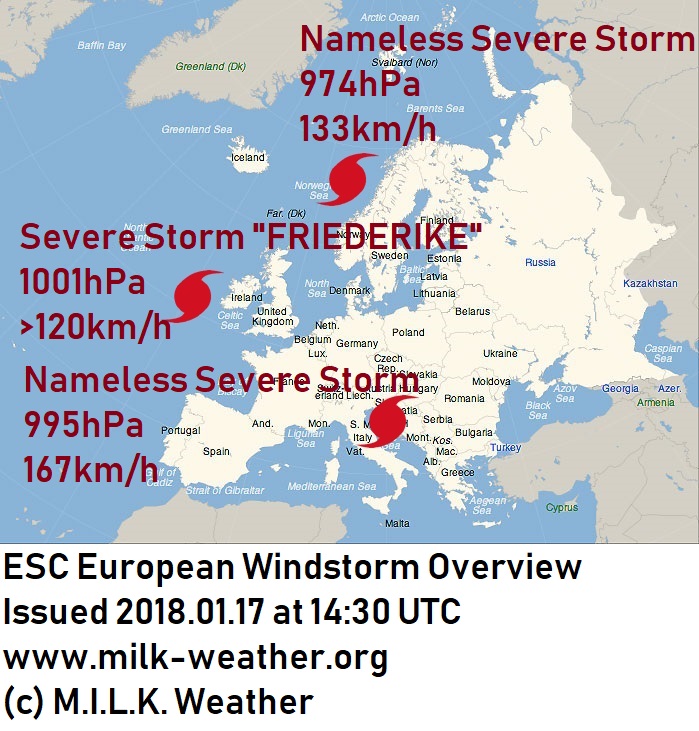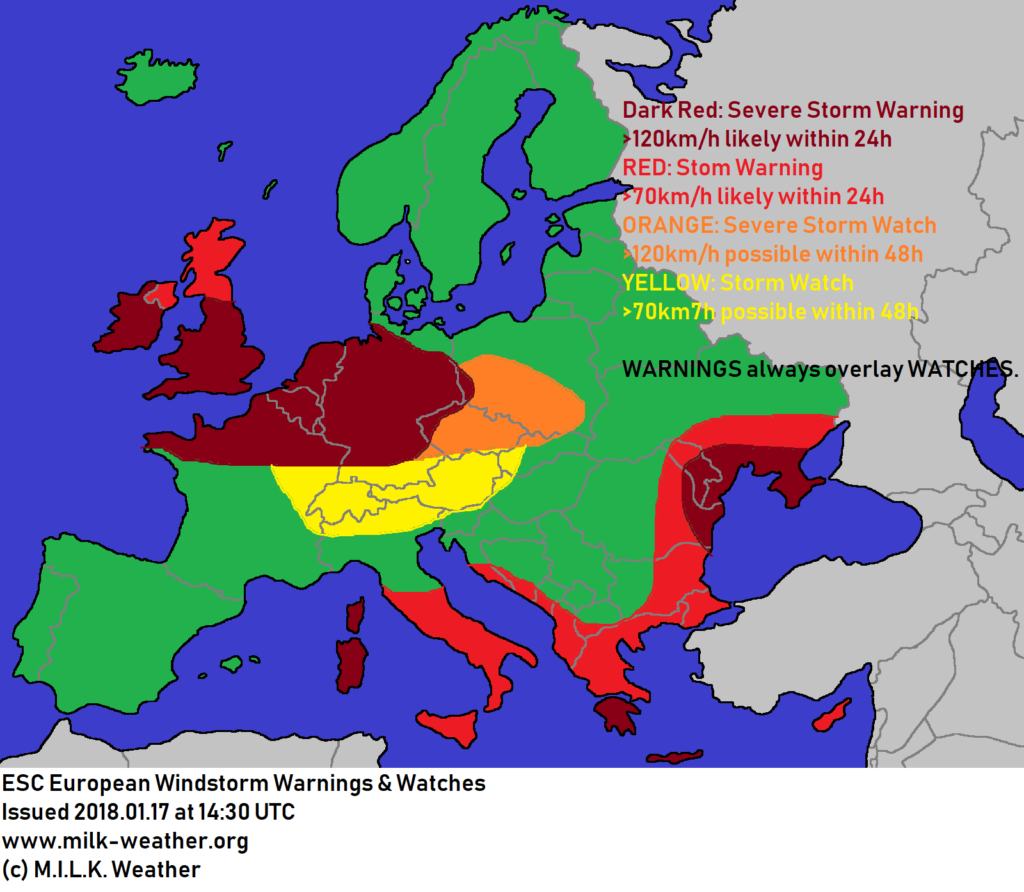Wettervorhersage für Berlin, Ausgegeben 2018.01.17 um 17:30 MEZ
Weather Forecast for Berlin, Issued 2018.01.17 at 17:30 CET (English Version Below)
Am DONNERSTAG bleibt es meist bedeckt. Am Nachmittag ziehen dann von Westen her Niederschläge auf, die anfangs noch als Schnee, später dann aber als Regen fallen werden. Die Temperaturen werden in der Früh mit 1°C nur knapp über dem Gefrierpunkt liegen, und werden tagsüber voraussichtlich Höchstwerte von etwa 4°C erreichen. Der Wind wird besonders am Nachmittag und Abend stark bis stürmisch sein, und es muss mit STURMBÖEN um 90km/h gerechnet werden.
Am FREITAG beruhigt sich das Wetter dann wieder etwas. Allerdings bleibt es weiterhin meist bedeckt oder zumindest stark bewölkt, und vereinzelt kann es auch– besonders in der Früh – Schneeschauer geben. Die Temperaturen werden von 0 bis 3°C reichen, und der Wind wird meist leicht sein.
Am SAMSTAG ist es in der ersten Tageshälfte überwiegend stark bewölkt bis bedeckt, immer wieder kann es auch Schneefälle geben. Am Nachmittag lockert es dann aber voraussichtlich auf. Die Temperaturen werden in der Früh bei -2°C liegen und tagsüber maximal +1°C erreichen, und der Wind wird leicht sein.
WEITERE AUSSICHTEN:
Sonntag: Wechselnd bewölkt, -5 bis +1°C
Montag: Wechselnd bewölkt, -2 bis +3°C
Dienstag: Regnerisch, 4 bis 10°C
Mittwoch: Wechselnd bewölkt, 5 bis 10°C
Donnerstag: Bedeckt, 5 bis 9°C
+++++++++++++++++++++++++++++ENGLISH VERSION++++++++++++++++++++
On THURSDAY, it will stay largely overcast, and in the afternoon precipitation will move in from the west, which will initially fall in the form of rain, but later change to rain. The temperatures will start off only slightly above freezing at 1°C in the morning, and are expected to reach a high of 4°C. The wind will be lively or stormy and will pick up especially in the afternoon and evening; STORM GUSTS of around 90km/h are to be expected. More on the storm here: https://milk-weather.org/blog/?p=1951
On FRIDAY, the weather will calm down a bit. However, it will nonetheless stay mostly overcast or at least mostly cloudy, and at times – especially in the morning – there may also be snow showers. The temperatures will range from 0 to 3°C, and the wind will be mostly light.
SATURDAY will start off with overcast skies, time and again there can also be periods of snowfall. In the afternoon, the sky is expected to clear up. The temperatures will lie at around -2°C in the morning, and will reach +1°C during the day, and the wind will be light.
TREND:
Sunday: Partly cloudy, partly sunny, -5 to +1°C
Monday: Partly cloudy, partly sunny, -2 to +3°C
Tuesday: Rainy, 4 to 10°C
Wednesday: Partly cloudy, partly sunny, 5 to 10°C
Thursday: Overcast, 5 to 9°C















